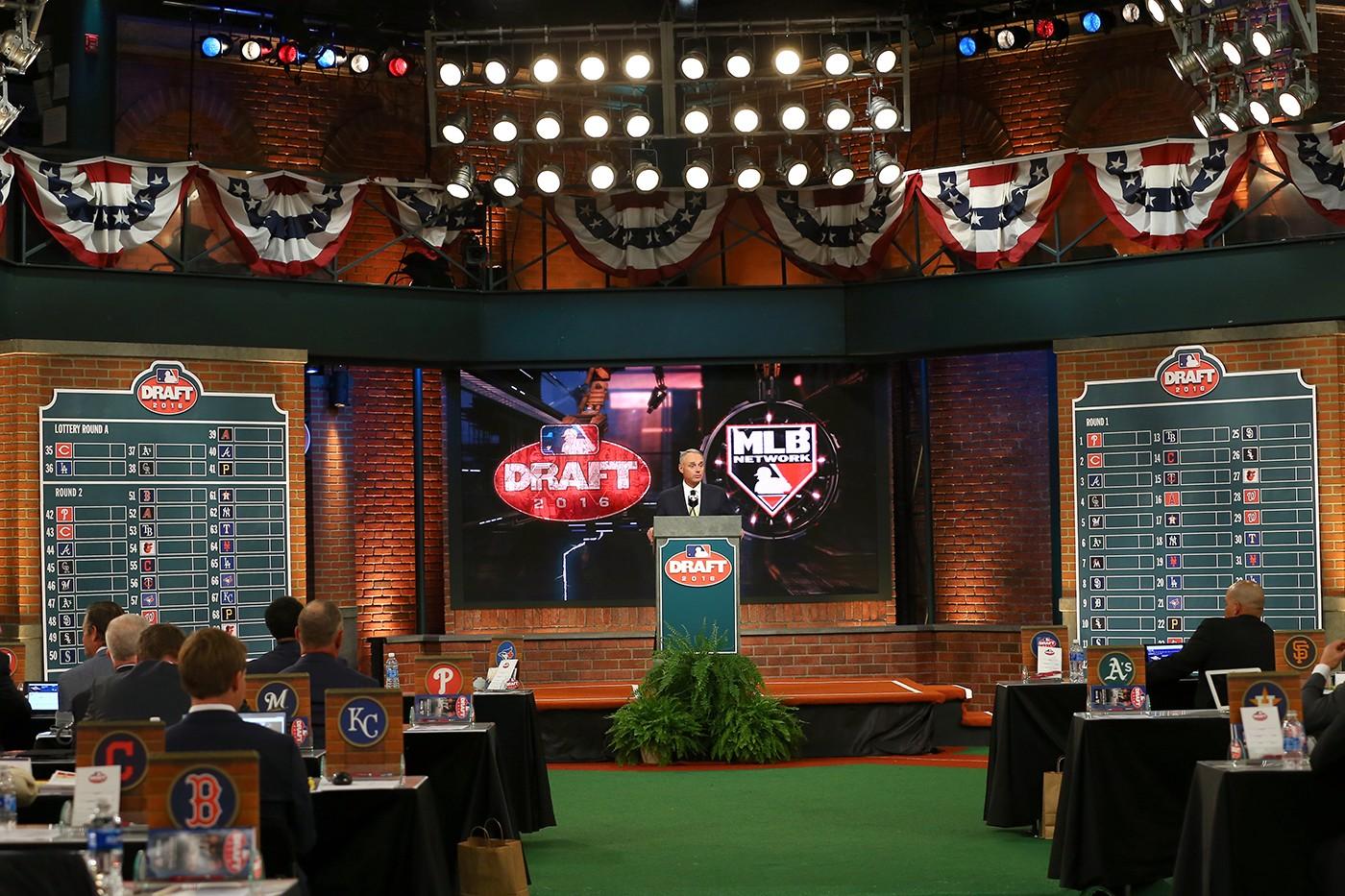The first 77 of the more than 1,000 total picks in the MLB draft came off the board last night. If these teams are any good at scouting and development, this group of players should represent the next generation of big league stars. But after the first wave of picks? Well, we’re not so sure how many big league clubs have earned our trust. Here are some questions.
Who is Mickey Moniak?
The no. 1 pick the draft turned out not to be University of Florida left-hander A.J. Puk, but a high school outfielder from Southern California named Mickey Moniak.
There’s a lot to like about Moniak. Almost all top high school position players are catchers, shortstops or center fielders that eventually move elsewhere. Moniak has the speed and athleticism to stay in center field, and one of the best hit tools in the class.
Somewhat unusually for a high school position player taken first overall — Carlos Correa, Justin Upton, Josh Hamilton, Alex Rodriguez — Moniak lacks top-end power. Phillies director of amateur scouting Johnny Almaraz told reporters that Moniak, currently listed at 6-foot-2, 185 pounds, could grow into double-digit home run power, but I imagine the Phillies expect him to turn into a leadoff hitter more than a slugger, which is fine. Plus, he’s got one of those great grinder names, which is important in Philadelphia. The 1993 Phillies were full of guys like that: Lenny Dykstra, Mickey Morandini, Jim Eisenreich, Dave Hollins. Just by looking at the names on the roster, you could tell they smelled like pine tar and went through astounding quantities of laundry detergent.
Almaraz and GM Matt Klentak said Moniak was the top player on their board, but he also stands to represent a significant savings on his signing bonus compared to other contenders for the top pick, which had to play into their decision.
So, the Phillies didn’t take the best player available?
Probably not, and the Braves, who picked a high school pitcher from New York, Ian Anderson, at no. 3, didn’t either. Both teams got cute and took a less-desirable player in the hopes of saving money for a falling star, like New Jersey prep lefty Jason Groome, arguably the draft’s most talented player, outfielder Blake Rutherford, or shortstop Delvin Pérez.
Did it work?
In short: nope. None of the big whales lasted that long, and the Phillies settled for California high school right-hander Kevin Gowdy at no. 42. The Braves fared a little better, grabbing two other high school pitchers, left-handers Joey Wentz and Kyle Muller, at nos. 40 and 44, before dipping into the college ranks for University of California catcher Brett Cumberland at no. 76.
Wentz, Gowdy, and Muller are all good prospects, but both teams would have been better off playing it straight. Let’s just use the Braves as an example: They had the no. 3 pick, a sandwich pick, and an early second-rounder, and they got the equivalent of two picks in the teens and a pick toward the back of the first round. What they didn’t get — with the third pick in the draft — was one of the top 10 players in the class. I don’t think so, and neither does MLB.com, Baseball America, or ESPN’s Keith Law.
Trading down, which this essentially is, gets talked about as a winning strategy in football, but the Braves weren’t the Cleveland Browns. They didn’t trade the no. 2 pick and a future fourth-rounder for the no. 8 pick, a third-rounder, a fourth-rounder, a future first, and a future second. They traded the third pick, the 40th pick, and the 44th pick for, let’s say, Picks 14, 18, and 28. It’s just not such a great leap in depth that the drop-off in top-end quality is automatically worth it. Maybe history will vindicate them, but it’s a risk.
Is there a lesson here?
The lesson from Day 1 is that when everyone around you is trying to find the new market inefficiency, the real market inefficiency is to just take the best player on the board. That’s what the Brewers did, grabbing Louisville outfielder Corey Ray at no. 5, and getting, for my money, a better player than anyone picked ahead of him. I’d say the same for Oakland, who got Puk with the sixth pick. Mercer outfielder Kyle Lewis was an absolute steal to the Mariners at no. 11, and Groome, the best player in the draft, lasted until the Red Sox took him with the 12th pick.
What does this mean for competitive balance?
Like, this whole enterprise is supposed to be about giving worse teams a better chance to get better. But instead, the supposed smartest people in baseball were moving cash around, like the little army man tokens in Risk, and praying that the other 29 teams, plus a group of teenagers and their advisers, didn’t fuck them over before their names came up again.
They weren’t picking the best players, and it was infuriating to watch, as once again in professional sports, complex and entirely self-imposed financial restrictions prevented teams from doing what benefits them the most. Meanwhile, the players get screwed out of millions in bonuses that a true free market would generate. (International amateur Yoan Moncada, who could negotiate with all 30 teams, was worth $63 million to the Red Sox. Since Groome can negotiate with only one team, Boston will spend maybe one-tenth of that on him.) And the fans have to learn the ins and outs of an MLB financial system that’s only slightly less complicated than the Treaty of Lisbon. Because we all know that when you’re trying to draw in new fans, or acquaint existing fans with new players, you want to make the process resemble not just doing your own taxes, but watching someone else do his or her taxes.
